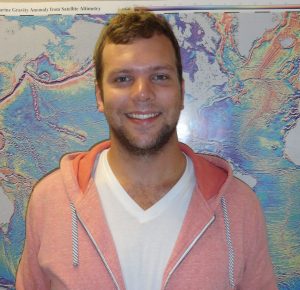Developing Stochastic Models as Inputs for High-Frequency Ground Motion
Simulations

Bill Savran
PhD Candidate, Geophysics
Wednesday, December 6th, 2017
CSL 422 – 10 am
watch Bill’s defense
Abstract
High-frequency (~10 Hz) deterministic ground motion simulations are challenged by our understanding of the small-scale structure of the earth’s crust and the rupture process during an earthquake. We will likely never obtain deterministic models that can accurately describe these processes down to the meter scale length required for broadband wave propagation. Instead, we can attempt to explain the behavior, in a statistical sense, by including stochastic models defined by correlations observed in the natural earth and through physics based simulations of the earthquake rupture process. Toward this goal, we develop stochastic models to address both of the primary considerations for deterministic ground motion simulations: namely, the description of the material properties in the crust, and broadband earthquake source descriptions. Using borehole sonic log data recorded in Los Angeles basin, we estimate the spatial correlation structure of the small-scale fluctuations in P-wave velocities by determining the best-fitting parameters of a von Karman correlation function. We find that Hurst exponents, ν, between 0.0-0.2, vertical correlation lengths, “, of 15-150m, and xiv standard deviation, of about 5% characterize the variability in the borehole data. Using these parameters, we generated a stochastic model of velocity and density perturbations and combined with leading seismic velocity models to perform a validation exercise for the 2008, Chino Hills, CA using heterogeneous media. We find that models of velocity and
density perturbations can have significant effects on the wavefield at frequencies as low as 0.3 Hz, with ensemble median values of various ground motion metrics varying up to ±50%, at certain stations, compared to those computed solely from the CVM. Finally, we develop a kinematic rupture generator based on dynamic rupture simulations on geometrically complex faults. We analyze ~100 dynamic rupture simulations on strike-slip faults ranging from Mw 6.4 – 7.2. We find that our dynamic simulations follow empirical scaling relationships for inter-plate strike-slip events, and provide source spectra comparable with an -2 model. Our rupture generator reproduces GMPE medians and intra-event standard deviations spectral accelerations for an ensemble of 10 Hz fullydeterministic ground motion simulations, as compared to NGA West2 GMPE relationships up to 0.2 seconds.

